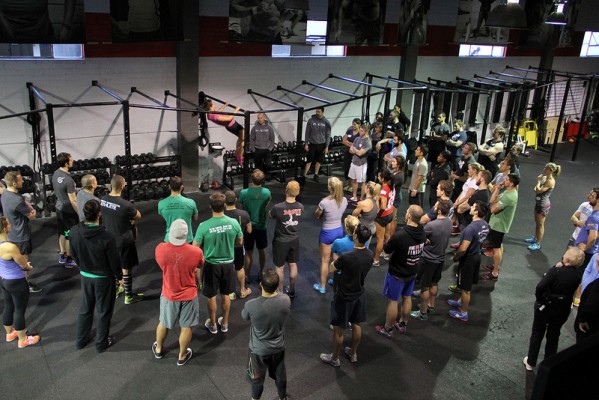
7 Ways to Make Yourself More Coachable
Written by Dave Lipson
As passionate coaches we want to impart athletes with as much knowledge, information, and attention as possible. Unfortunately, the communication process is often interrupted both on the coaches and athletes’ part by group size, distractions, time constraints, etc…. Here are 7 ways that you as an athlete can get the most out of the coaching we are trying to provide.
- Show up 10 minutes early. This will help you check out the workout, watching the previous class finish. You can get a glimpse of the scaling options, target times and goals for the workout, and give you a transition time to mentally ramp up to get in the right mindset.
- Talk to your coach. Before the workout is a great time to bring to the coach’s attention any special need or considerations you might have. Maybe you have an injury, maybe you are scared, maybe there is something that is especially challenging for you. Before class is a great time to address those things.
- “Get in tight!” Like it’s cold and I’m the camp fire when we are briefing the workout or going over ways to attack the workout. Having to repeat stuff takes time away from athletes, so get it in close even if it gets a little weird.
- Slow it down when we go over progressions. We are after quality, not quantity, when it comes to learning movement. Don’t be in a rush. Quiet your mind and concentrate on the concise cues the coach is giving. Work on improving little details, and retain those little improvements, so they can accumulate over time.
- Get eyes on you. Ask the coach to watch your movement. It doesn’t have to be every rep, but the coach should see a few good reps for every athlete and regardless of your ability you should walk away with at least one cue. Wait for the coach, ask for attention. This also puts pressure on you to perform with an audience.
- Write your cues down in a log. If there was a tactile or verbal cue that worked well with you, jot it down. Athletes internalize things in different ways, maybe squatting against the wall gives you a better lumbar curve or maybe if you just hear “arch your back” and that gets you there. Keep an inventory of your fixes.
- Stay after class. Pick the brains of coaches. Let them get into more details for the fixes or recommendations they made for you. This is a great chance to go into more detail and get the “why” of the actionable cues you got. After class is also a great time to do “goat work” and work on those weaknesses that challenge you. Maybe it is getting reps of the kipping pull-up progression or working on double-unders. It is often the accumulation of this time that facilitate breakthoughs.
These are a few ways to maximize the athlete coach experience. Understand that communication is a two-way street. We give a cue and you communicate with a physical result. But there are some types of communication that are not communicated physically. If there are any emotional considerations or things that we need to know to get you to work at the threshold of your physical and mental capacity we have a very approachable and empathetic staff waiting to help.
Crossfit for Hope Rx- 149Subbed Dead Hang PU for C2B, b/c my good workout buddy, Terry (aka the Colonel ) peldged me based on how many I could do! So for the cause, I’ve been working on em. 17 Dead Hang Pullups (10 pull ups and 7 chin ups). Stoked about this! In the CF Open, I tried like mad to get just one and couldn’t do it what a difference a couple of months makes! I just skinned my GOAT! Thanks Terry for supporting such a great cause .cancer sucks and especially for kiddos!